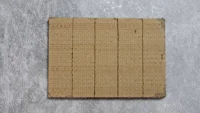Painting your house can be a gratifying, yet time-consuming project. To make the most of your time, take the following steps:
Remove any objects that will interfere with painting (such as furniture). Survey the walls up close for stains and blemishes that may bleed through paint.
Purchase and test paint samples. View them at different times of the day to see how the color looks in natural and artificial light.
Painter’s Tape

Painter’s tape is a necessary painting tool that helps ensure straight lines and protects surfaces from unwanted paint. It is available in various widths, with each type offering different levels of adhesion for various uses.
Start by identifying areas you need to protect. Typically, this will include the ceiling, trim around doors and windows, and baseboards.
Be sure to use painters’ tape instead of regular masking tape. The latter has a weaker adhesive and may not stick as well to the wall surface. This can result in paint bleeding under the tape.
Masking Tape
Masking tape is a type of pressure-sensitive tape used to mark or protect areas that shouldn’t be painted. It’s available in a variety of widths, thicknesses, and colors to suit different applications and surfaces.
Using masking tape throughout a paint job helps create straight lines and reduces the risk of accidental spills or smudges. It’s also essential for taping off doors, windows, and non-removable fixtures like light switches or electrical outlets.
The choice of masking tape depends on several key factors including its ability to hold for a certain period of time and remove cleanly from surfaces. Masking tapes that don’t come off easily can leave sticky residue and make cleanup more difficult, particularly on sensitive surfaces.
Plastic Sheeting

Plastic sheeting looks like a giant’s version of plastic wrap, and it’s often used to protect the floor, baseboards, and doors and windows from paint overspray. It can be purchased at paint, home improvement and hardware stores.
Plastic sheets are manufactured in a wide range of colors, thicknesses and materials. Some can be textured, transparent or functionally embossed. These materials are also able to be formed into complex shapes and structures. This helps them serve as a protective barrier for industrial and structural applications such as roofing, security glazing, machinery, marine construction and more.
Paint Brushes
Walking down the paint brush aisle at the hardware store can be a bit overwhelming. There are so many options and sizes!
When purchasing a paintbrush, you want to ensure it has good “spring.” This means the filaments are firm and can return to their original shape after being dipped in paint. You also want to ensure it’s the right size for the job at hand. Sash brushes work well on trim areas, door frames and skirting boards as they have less filaments than a wall brush. They’re also great for painting details or script lining.
Paint Cans
Whether you’re working on a total room makeover or just redoing one wall, you’ll go through a lot of paint cans. Rather than throw away those empty cans, repurpose them into functional decor pieces.
First and foremost, be sure that the cans are completely dry before attempting to reuse them. Even a small amount of leftover latex paint can pose a serious hazard to your health.
Using a can opener, spray paints, and screws, you can turn them into beautiful circle mirrors for your mudroom or entryway. You can also hang dog leashes from their handles, or use them to store scarves and mittens.
Paint Rollers

Using the right paint roller for a home renovation project can help you achieve smooth, professional results. Compared to painting with a brush, applying paint with a roller is faster and more efficient.
A paint roller consists of a handle, a metal frame, and a roller cover. Choosing the best roller and cover for your home painting project can make or break the finished result.
Different roller covers, like lamb’s wool, mohair, Dynel, or urethane foam, are made to work with specific types of paint and surfaces. Knowing how to use these rollers and their add-ons can ensure that you achieve the desired results in a short period of time.
Paint Trays
Having the right painting tools will ensure your paint job is done correctly and that you get that professional look for your home. A paint tray is an essential tool for any painting project.
Make cleaning your paint tray a breeze by using a liner. Liners are disposable plastic inserts that make it easier to clean the paint well of your tray between jobs.
Conclusion:
You can also create your own liners by turning two plastic bags inside out and slipping one over the paint tray. Then after painting, remove the bags, turn them back around and dispose of them as regular trash.

Vivan Henderson, a professional photographer born in Texas. Photography is his passion. He was fond of nature in his childhood. So he took his passion as a profession. He is basically nature photographer but also take other type of photo. He completed graduation in computer science from Texas Tech University. He lives in Houston with his wife and two children’s.





